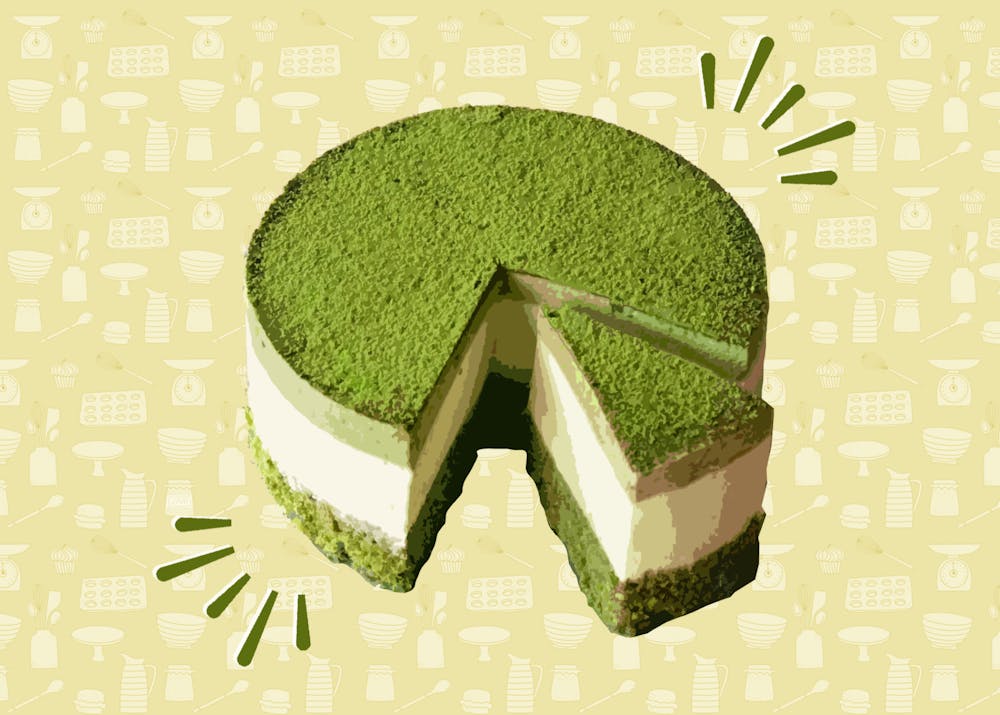Burnt Basque Cheesecake is simple, yet it has a unique depth of flavor. The addition of matcha in this version adds a beautiful savory umami. This dessert is a tasty, accessible option for baking enthusiasts with its uncomplicated preparation and short ingredient list.
I felt compelled to craft this particular cake to cope with my recent overwhelming midterms. This cake brings back cherished memories of my high school dormitory days when I would make the cake on a regular basis. Amidst the swirl of academic stress, the creation and sharing of cheesecake offered a sweet respite and a slice of happiness.
Burnt Basque Cheesecake is different from its traditional New York style counterpart, which is known for its creamy center and crumbly base. The Basque version has a charred exterior that encases a velvety dense interior without a crust.
While Burnt Basque Cheesecake can be adapted to a variety of flavors, I opt for matcha as a green tea lover. I infuse the cheesecake with green tea powder, giving the cake a beautiful green hue and a subtle earthy flavor.
Prep Time: 30 minutes
Bake Time: 25 minutes
Yields: one 4-inch cake, able to be shared between four people
Ingredients:
- 1 cup cream cheese, brought to room temperature
- ½ cup heavy whipping cream
- ¼ cup sugar
- 2 teaspoons matcha powder
- 2 eggs
Instructions:
- Preheat the oven to 460°F.
- Soften the cream cheese at room temperature to ensure it blends smoothly without lumps.
- Combine cream cheese and granulated sugar in a mixing bowl. Use an egg whisk to mix until the texture is smooth.
- Beat two eggs in a separate bowl.
- Gradually pour the eggs into the cream cheese mixture, stirring continuously to fully incorporate.
- Prepare the cream — sift the matcha powder over the heavy whipping cream in a liquid measuring cup. Mix well.
- Slowly pour the matcha-infused whipping cream into the cream cheese mixture, blending until smooth and the matcha color is evenly distributed.
- Transfer the cake mixture to a 4-inch round cake pan.
- Bake for 25 minutes or until the top is golden brown.
- After baking, leave the cheesecake to cool at room temperature. This step is crucial for setting the cake.
- Chill the cheesecake overnight — this will solidify its form and enhance the flavor.
Paired with a cup of coffee, this Matcha Basque Cheesecake enhances a simple afternoon with a taste of soothing matcha. It’s also a great dessert to enjoy after a meal for lingering sweet satisfaction.
This cheesecake holds a special place in my heart. It has been a savior during stressful academic periods in my life. The process of making this cheesecake, simple as it is, has become a therapeutic escape from the relentless cycle of studying and stress. Measuring, mixing and baking provided a tangible sense of accomplishment. Amidst the pressure, it reminds me that there may still be moments for creativity and pleasure.
This dessert is also a great one to share with others. I have eaten this cake with friends and roommates, and it has fostered a sense of support and community among my loved ones. Each slice shared was not just a treat but an encouragement — a small but significant reminder that “we can do it.” I invite you to bake this cake to help you connect with others and celebrate the simple joys amidst life’s complexities.







